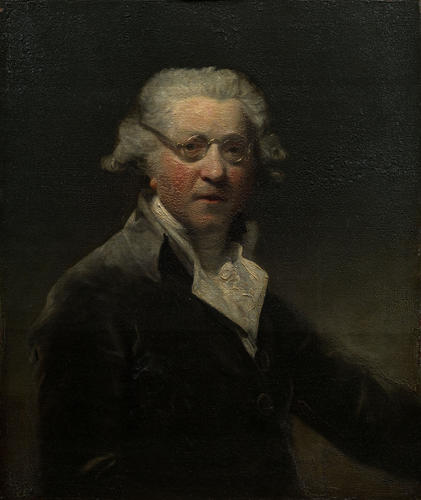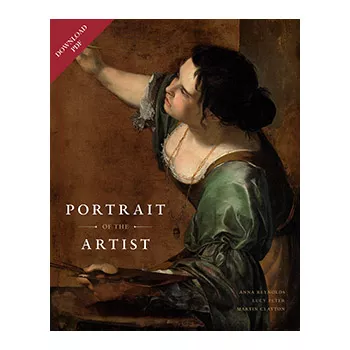Self-portrait c. 1788
Oil on panel | 75.1 x 63.4 cm (support, canvas/panel/stretcher external) | RCIN 400699

Sir Joshua Reynolds (1723-92)
A Self-Portrait c. 1788
-
Of the no less than 27 self-portraits Sir Joshua Reynolds painted during his lifetime, this was his penultimate, produced c.1788 when he was about 65. It was a popular work and was frequently copied. This original version was presented to George IV, a great admirer of Reynolds’s work, by the artist’s niece, Mary Palmer, Marchioness of Thomond, 20 years after his death. Palmer lovingly described it as ‘the best portrait [Reynolds] ever painted of himself’. The following year the British Institution organised an exhibition of Reynolds’ work making it the first full retrospective exhibition given to a single artist. It included over 200 of his pictures, nine of which were lent by the Prince Regent.
This unusual and enigmatic self-portrait was described by the artist’s first biographer, Edmond Malone, as ‘extremely like him’ and ‘exactly as he appeared in his latter days, in domestick life’. Reynolds shows himself attired both modestly and appropriately, as Aileen Ribeiro points out, ‘neither over-subservient to the whims of fashion, nor indifferent to dress’, his outfit consisting of a high-collared frock coat, a waistcoat with wide lapels and a shirt with a frilled edge. Unlike his earlier self-portrait, painted for the Royal Academy of Arts (RCIN 404282), Reynolds now wears a white wig, curled to resemble his own hair, which may have been thinning.
During his final years Reynolds made a number of concessions to his physical failings in his self-portraits.A severe cold, contracted while in Rome, left him partially deaf, resulting in the need for an ear trumpet, which he carried with him and holds in Zoffany’s Academicians of the Royal Academy (RCIN 400747). A self-portrait of c.1775 (Tate, London), shows the artist with his hand cupped against his ear, a visual reference to his growing deafness.
This is the only self-portrait in which Reynolds shows himself wearing spectacles: those shown here are ‘wig spectacles’, designed with extra-long, double-jointed sides to reach around the sitter’s wigged head. The deterioration of his eyesight is well documented. He suffered from inflammation of the eyes in 1783, resulting in the need for spectacles, and in July 1789 he experienced a frightening and very sudden blindness in his left eye, something he described as like a curtain falling across his face. Within ten weeks he had lost all sight in that eye and by January 1791 was almost completely blind. Two pairs of Reynolds’s spectacles are known to survive, both indicating that the artist was short-sighted and is unlikely to have needed them in order to paint this self-portrait. Thus by deliberately including his spectacles here the artist presents himself as a man of intellect who, despite his ill-health, is more than capable of thinking great thoughts.
Text adapted from Portrait of the Artist, London, 2016Provenance
Presented to George IV by the artist's niece; recorded in store at Carlton House in 1816 (no 295) and 1819 (no 304); hanging in the Picture Gallery at Buckingham Palace in 1841 (no 1)
-
Creator(s)
(framemaker)(nationality)Acquirer(s)
-
Medium and techniques
Oil on panel
Measurements
75.1 x 63.4 cm (support, canvas/panel/stretcher external)
98.4 x 85.2 x 6.5 cm (frame, external)
Category
Object type(s)
Other number(s)
Alternative title(s)
A Self-Portrait
Portrait of the Artist
Sir Joshua Reynolds (1723-1792)
Self-portrait, aged about sixty-five









